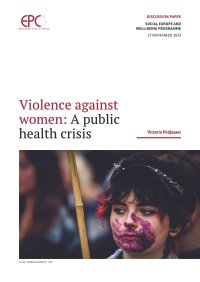By Malore Dusenbery, Josh Fording, Jennifer Yahner, Jeanette Hussemann, Robbie Dembo
Victims of crime can experience serious harms and face significant costs with long-term implications for their economic security and safety. From 2022 to 2024, the Urban Institute and NORC at the University of Chicago conducted a National Study of Victim Compensation Program Trends, Challenges, and Successes, which included evaluations of four state crime victim compensation programs. This brief presents our evaluation of New York State’s victim compensation program to understand its utilization and professionals’ and victim claimants’ perspectives on its ability to meet victims’ needs. We conclude that the New York compensation program serves a vital role helping victims address the financial burden of crime with many strengths and recent improvements. Although participants identified some gaps in coverage, the program is overall comprehensive, with no limits on medical costs and increases to property and funeral coverage. And despite challenges making changes to compensation coverage, professionals appreciate that the program has been able to evolve eligibility and benefits based on victims’ needs, which we hope they continue to do for new communities (e.g., migrants) and emerging costs (e.g., informal economy wages). The program has made great efforts to be accessible, with multiple ways to submit a newly shortened application, frequent training and outreach to victim assistance providers and other programs, and a statewide awareness campaign and needs assessment in 2023. The program also recently enacted several major changes to improve the accessibility and equity of the program, particularly eliminating the requirement to report to law enforcement and changing the policy on contributory conduct for homicide claims. Professionals in the compensation program and the community offered recommendations for improving New York’s compensation program regarding awareness and accessibility, compensation coverage, and program funding and staffing. The most common suggestion was to do more public information campaigns and advertising to increase people’s awareness of the program before they become victims. The program could also conduct training and education alongside providers and educate programs in underserved communities beyond victim assistance programs, including schools, hospitals, YMCAs, social services, and family service providers. Additional staff are needed to efficiently process claims, respond to claimant outreach, and help claimants understand the appeals process. Spanish-speaking staff in particular could help reduce the number of Latino claimants who want but do not get help. Potential solutions to increase staff recruitment and retention include increasing salaries, providing more resources on vicarious trauma, and opening up more career paths for staff who start in the compensation program. Many of these findings and recommendations align with those emerging nationally in conversations about how to improve victim compensation programs. We are grateful that programs such as New York’s remain open to evaluation and eager to understand how to continue increasing awareness and accessibility of the program across the state and within underserved communities, maximizing coverage, and improving their efficiency and effectiveness so they may best serve all victims in need.
Washington, DC: Urban Institute 2024. 24p.





















